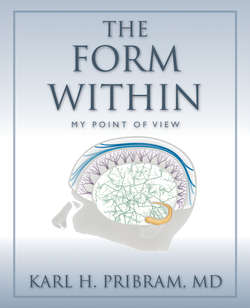Читать книгу The Form Within - Karl H Pribram - Страница 27
На сайте Литреса книга снята с продажи.
Perception Revisited
ОглавлениеIt was not until the early 1960s, a few years into my tenure at Stanford, that the issue of brain processes in perception would confront me once again. Ernest (Jack) Hilgard, my colleague in psychology at Stanford, was preparing an update of his introductory psychology text and asked me to contribute something about the status of our current knowledge regarding the role that brain physiology played in perception. I answered that I was very dissatisfied with what we knew. I described the experiments, conducted both by myself and others, that had disproved Köhler’s belief that perception could be ascribed to direct current brain electrical fields shaped like (isomorphic with) envisioned patterns.
Further, I noted that David Hubel and Thorsten Wiesel had recently shown that elongated stimuli, such as lines and edges, were the most successful shapes to stimulate neurons in the primary visual receiving cortex. They had suggested that perception might result from something like the construction of stick figures from these elementary sensitivities. However, I pointed out, this proposal wouldn’t explain the fact that much of our perception involves patterns produced by shadings and textures—not just lines or edges. For me, the stick-figure concept failed to provide a satisfactory explanation of how our brain organizes our perceptual process. Hilgard asked me to give this important issue some further thought. We met again about a week later, but I still had nothing to offer. Hilgard, ordinarily a very kind and patient person, seemed just a bit peeved, and declared that he did not have the luxury of procrastination. He had to have something to say in his book, which was due for publication. He asked me to come up with a viable alternative to the ones I had already disproved or so summarily dismissed.
